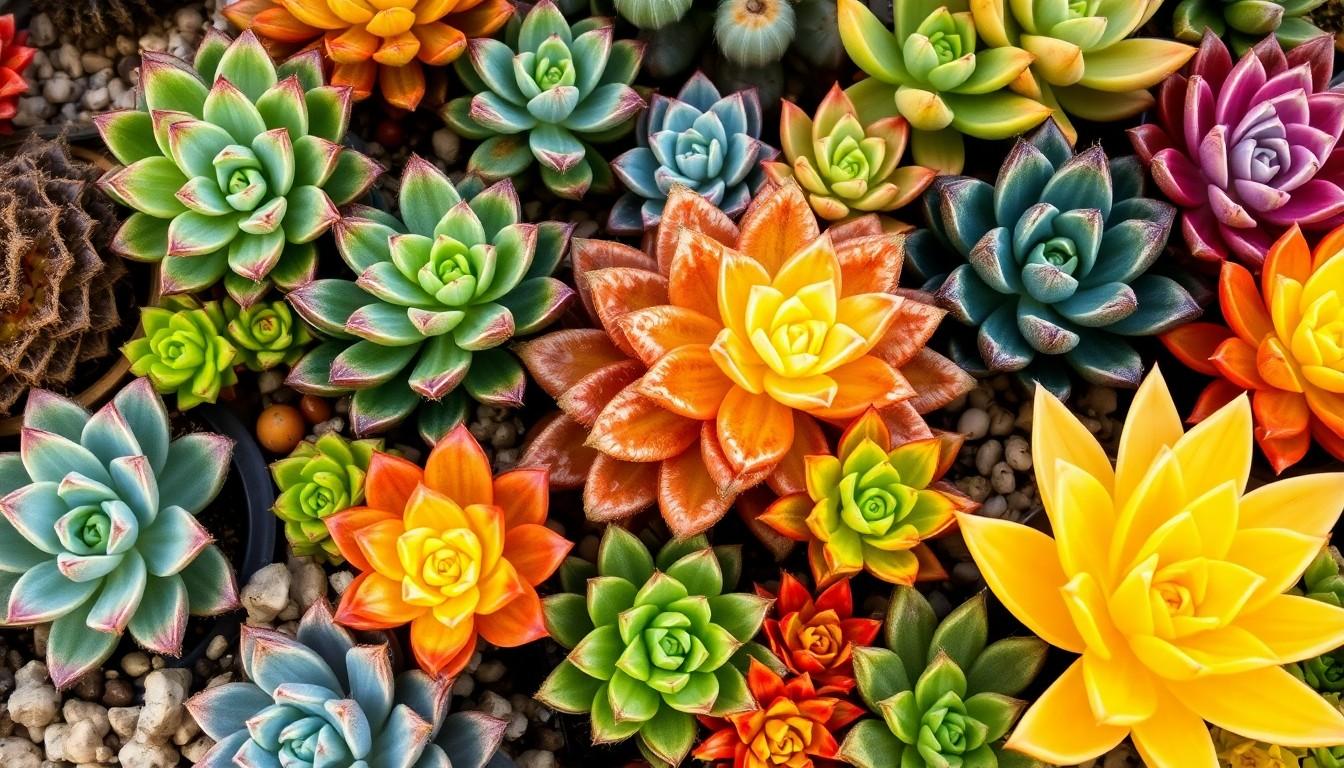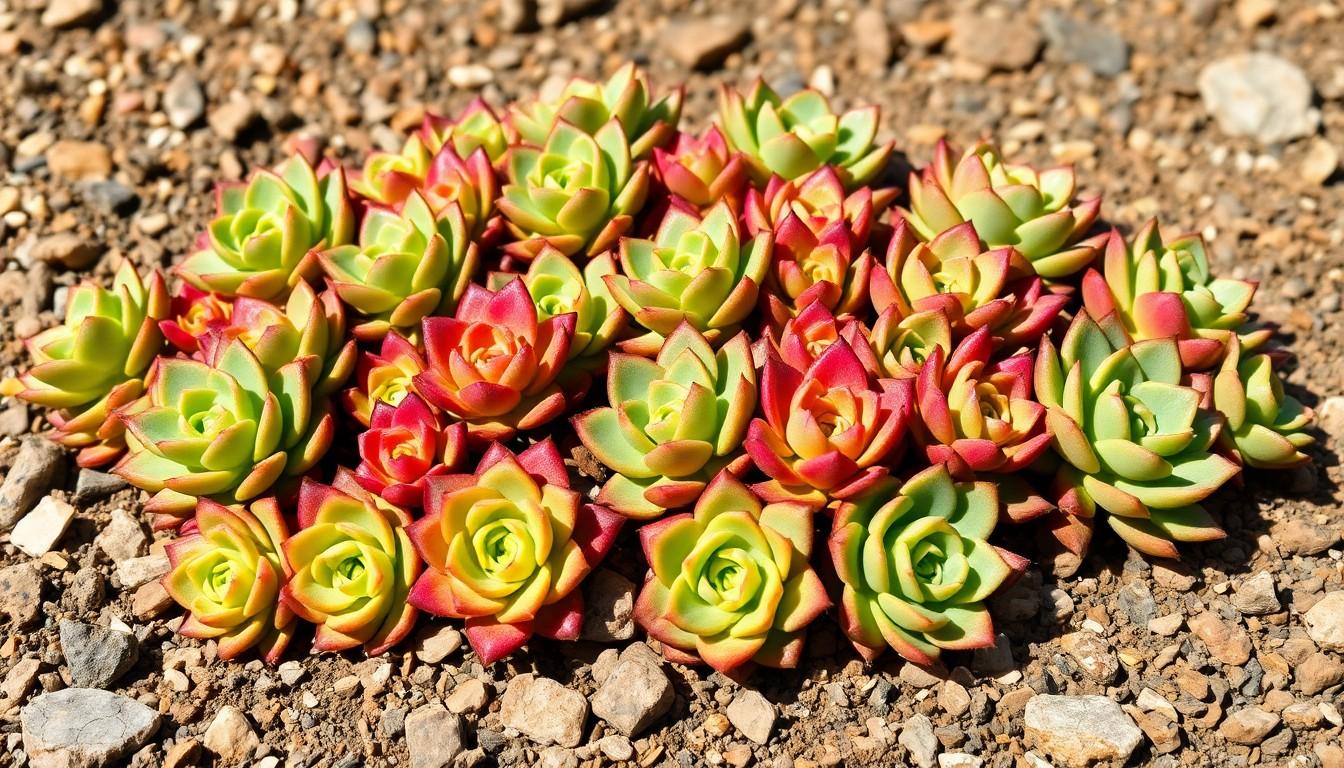If there’s one plant that knows how to party, it’s the hens and chicks succulent. With their rosette shape and vibrant colors, these little green wonders are the life of any garden gathering. They’re the perfect blend of charm and resilience, thriving in a variety of conditions while requiring minimal care. Who wouldn’t want a plant that’s as low-maintenance as a cat?
Overview of Hens and Chicks Succulents
Hens and chicks succulents, scientifically known as Sempervivum, are popular among gardeners for their low-maintenance characteristics and striking aesthetics. These succulents grow in clusters, with the larger plant, often referred to as the “hen,” producing smaller offsets called “chicks.” Adaptability defines these plants; they thrive in poor soil and require little water.
Growth patterns show that hens and chicks form rosettes that can vary in color, from deep purples to vibrant greens. Varieties such as Sempervivum tectorum and Sempervivum arachnoideum display unique features, enhancing their appeal. Gardeners appreciate that these succulents flourish in sunny locations, making them suitable for rock gardens and container arrangements.
Care involves minimal effort. These plants benefit from well-drained soil and should not sit in water. They withstand cold temperatures, remaining hardy in USDA zones 3-9. Flowering typically occurs in summer, showcasing tall stalks adorned with small star-shaped blooms, attracting pollinators like bees and butterflies.
Propagation occurs easily through offsets or leaf cuttings. Home gardeners enjoy sharing these plants, fostering a sense of community and connection. Versatile in design, hens and chicks work well in various garden styles, adding texture and color throughout the seasons. Their resilience offers comfort to those new to gardening, allowing for successful growth with minimal knowledge.
Types of Hens and Chicks Succulents

Hens and chicks succulents encompass a variety of species with unique characteristics that appeal to gardeners. These plants display different colors, shapes, and growth habits, contributing to their popularity.
Common Varieties
Sempervivum tectorum tops the list of popular varieties. This variety features green rosettes that often have reddish tips, especially in full sunlight. Another common choice, Sempervivum arachnoideum, showcases a unique hairy texture with compact leaves. Variations like ‘Peach Perfection’ and ‘Blackberry Wine’ provide stunning color contrasts, making them highly sought after for aesthetic appeal. Each variety thrives in similar conditions, making care straightforward.
Unique Cultivars
Exploring unique cultivars adds excitement to any collection of hens and chicks. ‘Cactus Flower’ captivates with striking orange and green rosettes, perfect for adding vibrancy to gardens. Meanwhile, ‘Golden Sunrise’ stands out with its bright yellow foliage. ‘Mellow Yellow’ introduces creamy yellow tones that pair well with other succulents. Each unique cultivar provides distinct visual interest, enriching the overall garden landscape.
Growing Hens and Chicks Succulents
Hens and chicks succulents thrive in specific conditions that enhance their growth. Understanding these conditions ensures vibrant, healthy plants.
Ideal Growing Conditions
Bright, indirect sunlight promotes optimal growth for hens and chicks. Most varieties prefer six hours of sunlight daily, with some tolerating full sun. Locations with some protection from extreme heat benefit these plants, preventing sunburn on leaves. Additionally, mild temperatures ranging from 65°F to 80°F suit their development. When winter arrives, they handle temperatures as low as -30°F, making them hardy in various climates. A well-ventilated space fosters healthier plants, minimizing the risk of rot.
Soil and Watering Requirements
Well-draining soil is crucial for hens and chicks succulents. A commercial cactus mix or a blend of potting soil and sand ensures proper drainage. Watering practices affect their health significantly. These plants require infrequent watering, with deep soaking occurring only when the soil dries out completely. During the growing season, typically from spring to early fall, allow the soil to dry out between waterings. In winter, reduce watering to prevent over-saturation, which can lead to rot. Adhering to these guidelines promotes robust and flourishing plants.
Care and Maintenance
Caring for hens and chicks succulents involves simple practices that promote growth and health. These resilient plants thrive with minimal intervention from the gardener.
Fertilizing Tips
Fertilization should occur during the growing season, typically in spring and summer. Use a diluted, balanced liquid fertilizer every four to six weeks for optimal growth. Organic options, like fish emulsion or compost tea, enhance soil nutrients safely. A succulent-specific fertilizer works effectively to prevent over-fertilization, which can harm the plants. Avoid fertilizing during fall and winter when the plants are dormant.
Pest and Disease Management
Pests like aphids and mealybugs occasionally target hens and chicks, but prompt action keeps them at bay. Inspect plants regularly for signs of infestation, such as yellowing leaves or webbing. Treat minor infestations with insecticidal soap or neem oil for effective results. Proper watering practices reduce the risk of rot, a common issue caused by overwatering. Additionally, good air circulation around the plants minimizes disease risks, fostering a healthy environment.
Propagation Techniques
Propagation of hens and chicks succulents is straightforward, making these plants accessible for gardeners at all skill levels. Offsets, or chicks, detach naturally from the mother plant, allowing for easy transplanting. Gardeners can gently twist or cut these offsets away from the hen when they are at least one-third the size of the parent.
Leaf cuttings serve as another effective method for propagation. Selecting healthy leaves, free of pests or damage, is crucial. The chosen leaves need to be laid flat on well-draining soil, allowing the cut end to callus over for a few days before watering. Rooting typically occurs within a few weeks, with a new rosette emerging from the leaf base.
In addition to offsets and leaf cuttings, planting divisions enhances propagation efforts. Dividing larger clusters into smaller segments aids in creating new plants while maintaining the health of the parent rosette. Each division should ideally contain a healthy rosette and sufficient roots for optimal establishment.
Timing also plays a role in successful propagation. Spring and early summer offer ideal conditions, as temperatures promote growth and recovery. Regularly watering newly propagated plants lightly helps establish roots without causing rot.
Utilizing these techniques fosters a thriving collection of hens and chicks succulents. These methods ensure gardeners can expand their succulent gardens efficiently, enjoying a colorful display and resilience throughout the seasons.
Conclusion
Hens and chicks succulents are a fantastic choice for any gardener looking to add beauty with minimal effort. Their vibrant colors and unique rosette shapes make them visually appealing while their hardiness ensures they thrive in various conditions.
These resilient plants not only enhance garden aesthetics but also offer easy care and propagation options. With the right growing conditions and care practices, they can flourish and bring joy to both novice and experienced gardeners alike. Embracing hens and chicks succulents can transform any outdoor space into a stunning display of nature’s artistry.

